Architects Shin Keunshik and Lee Kyubong, who led the creation of an 80m long earthen wall at the 2000 Gwangju Biennale, opened Architerre (www.architerre.org), whose name combines the words for architecture and earth (terra in French), to pioneer earth architecture in Korea.
Abari Adobe Dome
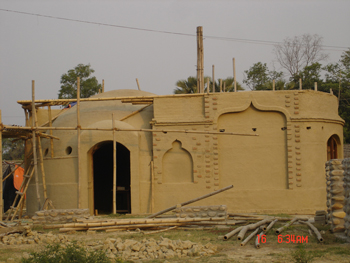
Abari, a socially and environmentally committed research,design and construction firm that examines, encourages, and celebrates the vernacular architectural tradition of Nepal. In this recent project, the dome will be covered with bamboo roof as a protection again heavy tropical rain. The adobe structure is reinforced with bamboo to make it earthquake resitant. This structure is a reception of community structure, which is also being built.
SIREWALL
SIREWALL® has updated ancient rammed earth processes with a new global standard for durable, healthy and energy efficient buildings and spaces. SIREWALLs are Stabilized, Insulated, Rammed Earth walls. SIREWALL homes and buildings are constructed with a matrix of local soils strengthened with rebar and a small percentage of cement that surround a core of insulation. A typical SIREWALL is 18? to 24? thick, with 4? of rigid insulation hidden in the centre of the wall. From a dream home or cottage to a winery or cultural centre, SIREWALL builds beautiful walls with timeless distinction.
SIREWALL, the creation of an acclaimed local green building company and recipient of a Governor General’s Medal in Architecture, will be offering introductory courses on Stabilized, Insulated, Rammed Earth (SIRE) this spring and summer.
Women’s Health Centre
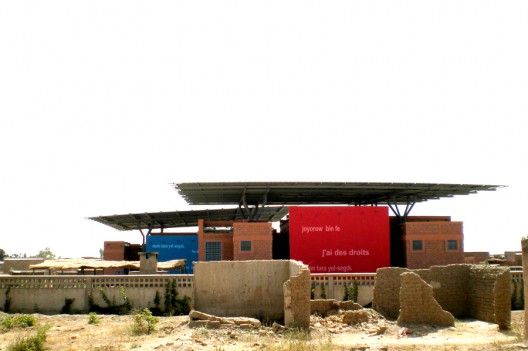
The Centre pour le Bien-être des Femmes Women’s Health Centre in Burkina Faso was created between 2005 and 2007 by AIDOS, an Italian NGO fighting for Women’s Rights in Developing Countries.
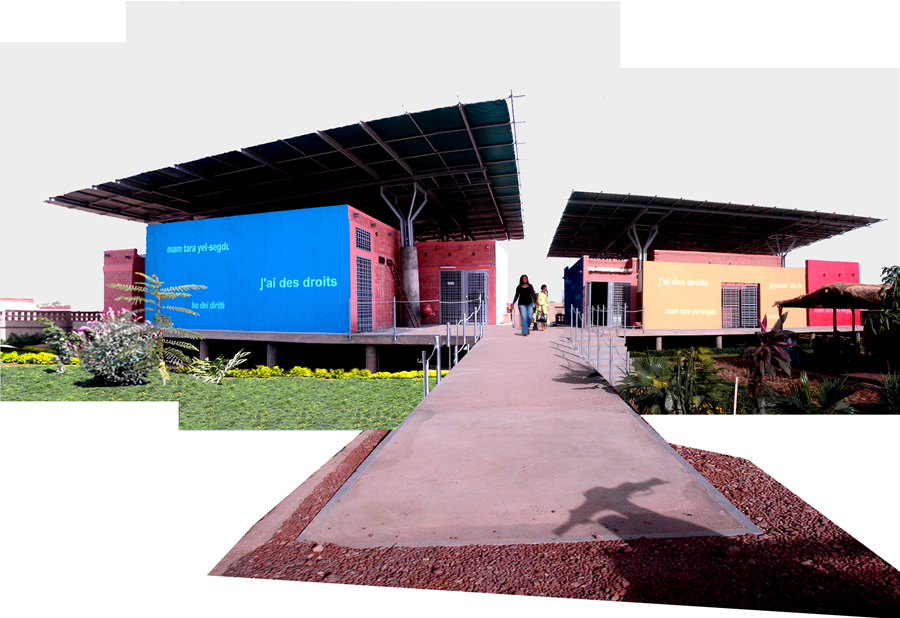
Completed in 15 months by a local builder, under the direct supervision of FAREstudio, the CBF is functionally and cost-effective answer to the needs expressed by AIDOS, while simultaneously and primarily representing a centre of aggregation and identity for the entire local community.
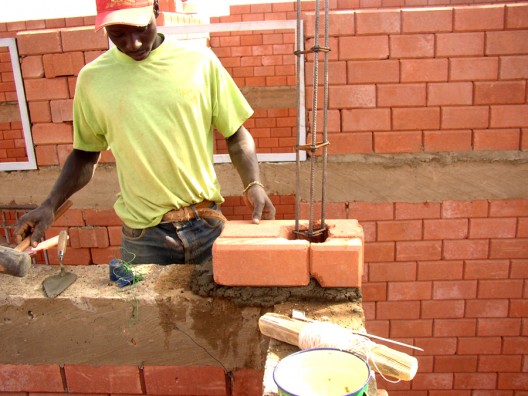
The building walls are constructed using compressed dry stacked clay bricks, BTC [briques en terre comprimée], made on site using a rough mixture of earth, cement and water. The bricks were baked in the hot sun, with no energy consumption, thus limiting the environmental impact of the material.
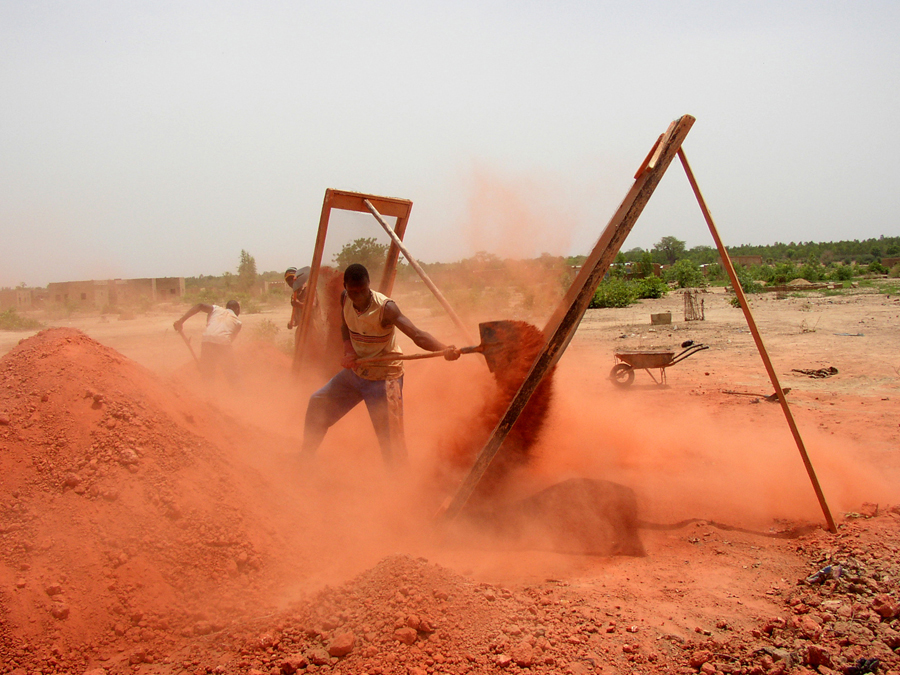
Bardessono
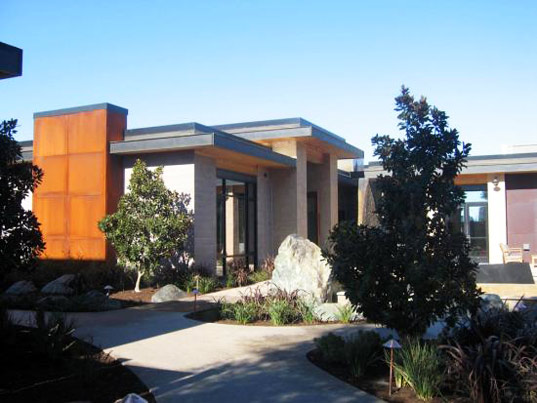
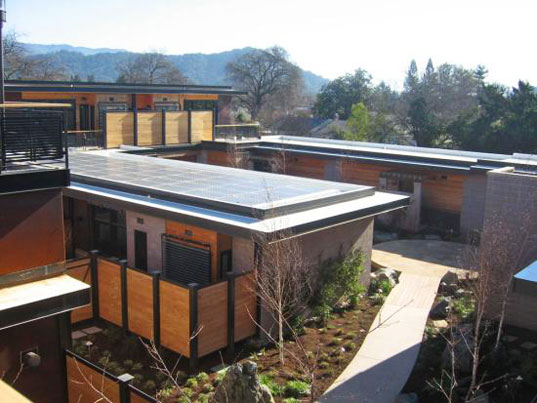
The Bardessono eco-resort is Napa Valley’s newest luxury hotel. It a host of green building strategies including rammed earth walls, grey and black water treatment systems, and solar and geothermal energy. Completed just seven weeks ago by eco-developer Phil Sherburne and architect Ron Mitchell, the project is currently pursuing LEED platinum certification. [ via Inhabit.com ]
Martin Rauch Builds His Own Home

Notable rammed earth building Martin Rauch, with the assistance of architect Roger Boltshauser recently completed his own rammed earth home in Schlins, Austria. The house which was finished 2008 reacts in its position and in its character directly to the topographic gradient of the slim plot and its genuine landscape context: A monolithic structure becomes a sculptural bloc, an abstract and artificial nature pressed upward from the underlying earth.
Building Design Reviews Earth Architecture
Valentina Del Fuoco authors a review of Earth Architecture on Building Design: The Architects Website.
University of Bath Research Studentships in Earth Architecture
The University of Bath Department BRE Centre for Innovative Construction Materials in the Department of Architecture and Civil Engineering is offering Research Studentships that include:
Humidity buffering using earth masonry: During experimental studies, earth masonry has been shown to buffer humidity in buildings by reducing peaks experienced under normal usage (e.g. in shower rooms). This has potential to improve occupant health and reduce ventilation (and therefore energy demand) in buildings but the effect has not been fully qualified. This project aims to quantify how earth masonry materials can buffer humidity in buildings. Supervisor Dr Andrew Heath
Grouting mix design for historic mud brick masonry: Established grouting methods are available for stone and brick masonry set in lime mortar. However there is at present little work on unfired and low-fired brick masonry set in predominantly mud mortar with rubble cores. This type of masonry constitutes a large proportion of historic buildings worldwide.The efficacy of grouting historic masonry to reinstate integrity or enhance structural capacity, especially against lateral loading, has been proved by various researchers. The project will research ad hoc grouting mixes for traditional mud set masonry by investigating lime and soil mixes. Experimental work will be carried out by means of test walls. Non destructive testing techniques will be also used in collaboration with a well established testing house and on site trials will be conducted in the latter stage of the study. Supervisors Dr Dina D’Ayala and Dr Enrico Fodde.
Projects to start: October 2009
The studentships:
The studentships cover home/EU tuition fees, a standard stipend (currently £12,940 (tax free) per annum), and research expenses. In addition, departmental teaching assistantships, up to a value of £1500 p.a. are also available. Overseas students are eligible to apply, but will be expected to pay the difference between home/EU and overseas fees (currently around £8,000 p.a.) and have an English Language Qualification, IELTS of not less than 7 or its equivalent.
The successful candidate will join the BRE Centre for Innovative Construction Materials in the Faculty of Engineering & Design. In the recent Research Assessment Exercise 70% of staff at the University of Bath’s Department of Architecture and Civil Engineering were graded as internationally leading or internationally significant in their field. This translates as 6th place nationally in the Built Environment Unit of Assessment, and maintains the equivalent of our top 5 rating achieved in the 2001 RAE.
The University of Bath is located within the UNESCO World Heritage City of Bath.
Applications:
Candidates should hold a first or upper second class honours degree in Civil Engineering, Materials Science or a related subject.
For further information please contact: Prof. Pete Walker, Department of Architecture and Civil Engineering, University of Bath, Claverton Campus, Bath BA2 7AY; Email: p.walker@bath.ac.uk; Tel: 01225 386646.
Applications should be submitted by post or on-line. For further information on the application process please contact Emma Greeley (Email: e.s.j.greeley@bath.ac.uk; Tel: 01225 386908) or visit the university’s Graduate Office web pages: http://www.bath.ac.uk/grad-office/.
The deadline for receipt of applications is the 31st of March 2009.
The Earthbuilder
The Earthbuilder clasps a clump of clay-rich earth, with hands work-hardened,
earth mixed with chaff and chopped straw, all just dampened,
then moulds the soil that one hand holds, confidently shaping a rustic ball.
The Earthbuilder looks into the ball as if to watch futures revealed,
to witness the world to be rebuilt, an earth to be healed.
There are familiar spirits here, we hear their call.
This cob is placed on the foundation, on those good shoes.
At this signal many more hands join in, each muddy handful pressed onto growing rows.
A community evolves and a home begins to rise this way.
It is a simple and ancient thing, a child’s game at times, to build with earth this way,
being both right work and equally right play.
The goal is as serious as dirt, as wise as clay.
Walls moulded by a gathered strangers to hold a family and their friends.
If newly improvised rituals of earthbuilding gain good ends,
the home will be a fertile soil to enfold and nurture the lives of those within.
With many hands sculpting the mass, the house grows from of the land.
With good shoes and a good hat, a home will stand.
Work goes on as hours pass, and new days begin.
A community evolves as a human home rises, ex humus, out of the soil:
a home evolves as a human community rises, ex humus, out of the soil,
Humans grow from the clay, ex humus, into the light of a new day.
Poem ©Chris Green, Feb. 2009
Monier Residence
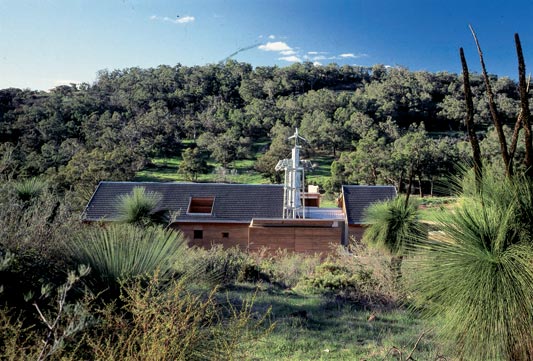
The Monier residence is a wood and rammed earth structure utilizes a variety of sustainable systems to produce its own energy and regulate its climate. The building is situated on a 4-acre site in Perth, West Australia and comprises 3 bedrooms and 2,500 square feet. Ackert Architecture designed the award winning structure “as a demonstration project to show how alternative energy and passive systems could be integrated to create a self sufficient home.”
